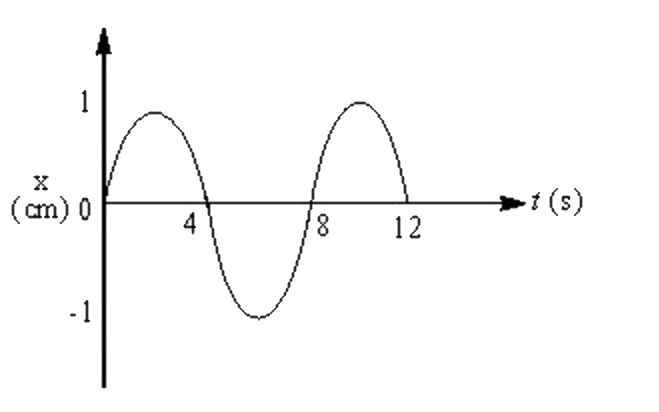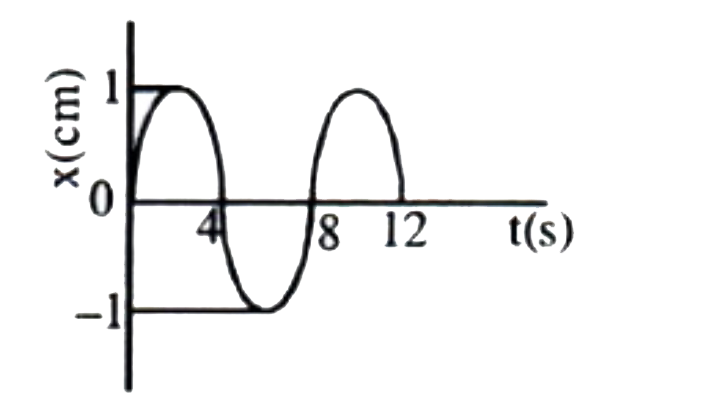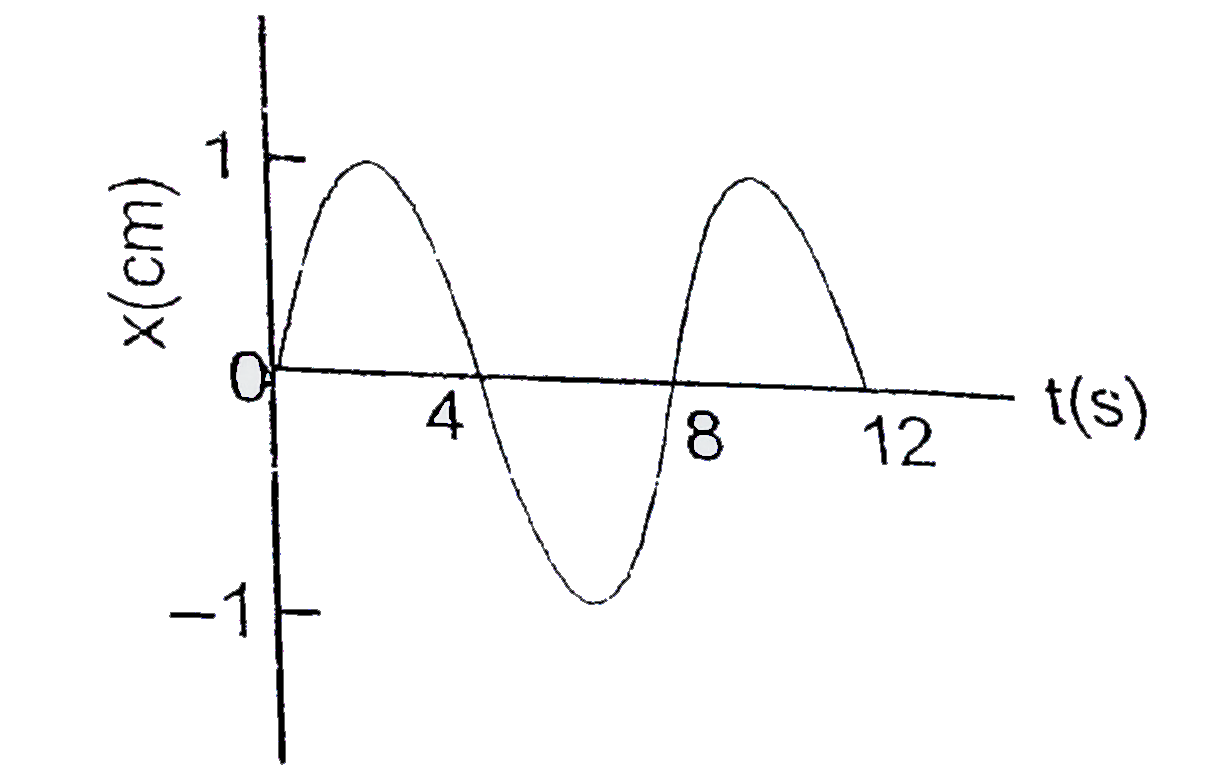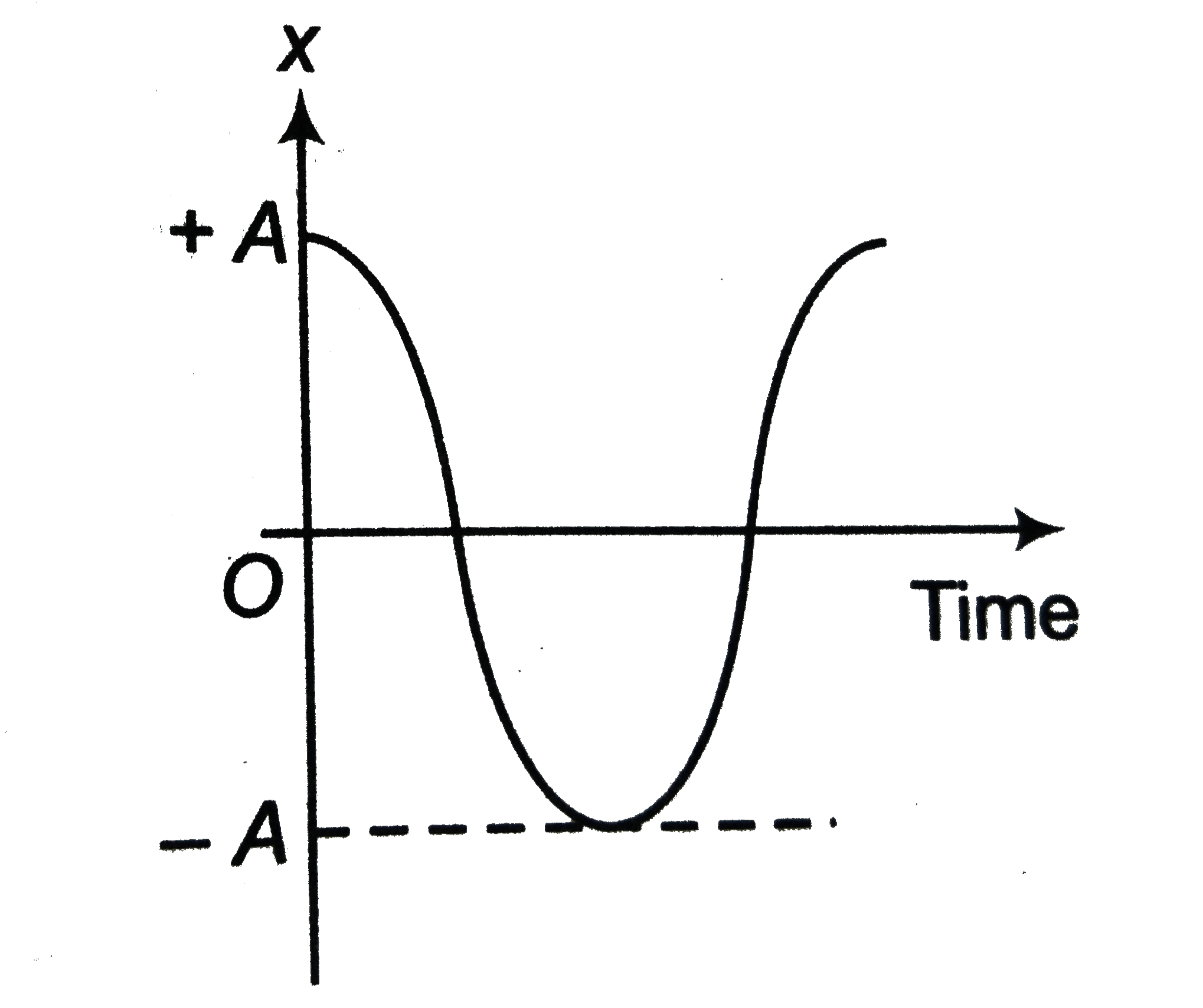The x - t graph of a particle undergoing simple harmonic motion is shown below. The acceleration of the particle at t =43 s is

√332π2cm/s2
π232cm/s2
π232cm/s2
−√332π2cm/s2
The correct Answer is:D
From graph
T=8 second , A= 1 cm, x=Asinωt=1sin(2π8)t.
a=−ω2x=−(2π8)2sin(2π8)gcm/s2
At, t=43 second a=−(2π8)2sin(π3)=−√3π232cm/s2
Topper's Solved these Questions
Similar Questions
The x-t graph of a particle undergoing simple harmonic motion is shown below. The acceleration of the particle at t=23s is
 View Solution
View SolutionThe x−t graph of a particle undergoing simple harmonic motion is shown below. The accelertion of the particle at t=4/3s is
 View Solution
View SolutionThe x−t graph of a particle undergoing simple harmonic motion is shown in figure. Acceleration of particle at t=4/3s is
 View Solution
View SolutionThe x−t graph of a particle undergoing simple harmonic motion is shown in figure. Acceleration of particle at t=4/3s is
 View Solution
View SolutionThe velovity-time graph of a particle moving in a straitht line is shown in . The acceleration of the particle at t=9s is.
 .View Solution
.View SolutionWhile a particle executes linear simple harmonic motion
View SolutionThe phase (at a time t) of a particle in simple harmonic motion tells
View SolutionThe displacement - time (x−t) graph of a particle executing simple harmonic motion is shown in figure. The correct variation of net force F action on the particle as a function of time is
 View Solution
View SolutionFor a particle executing simple harmonic motion, the acceleration is proportional to
View SolutionFor a particle executing simple harmonic motion, the acceleration is -
View Solution

